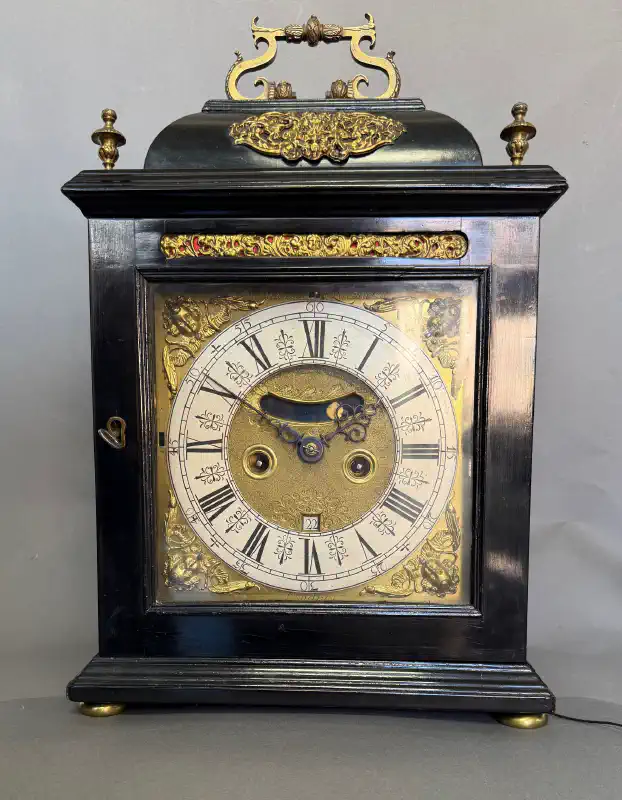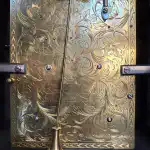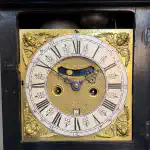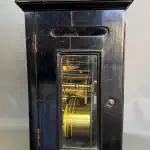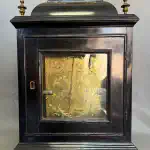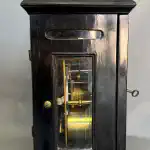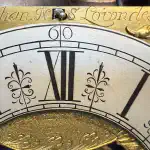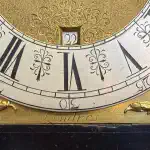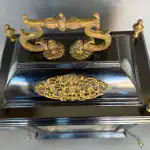Bracket clock Jonathan Lowndes
- Height:
- 35.5 cm handle down
- Maker:
- Jonathan Lowndes
- Price:
- on request
Seventeenth Century English Spring Clock by Jonathan Lowndes London
A good Willam and Mary eight-day spring-driven table clock signed on the backplate Jonathan Lowndes à Londres, c.1690-95.
The well-proportioned ebony-veneered oak domed top case has rectangular viewing windows to the sides so that the movement is almost entirely visible. The dome is adorned by a pierced ornament, whilst at the top of the door there is a pierced gilt brass strip, which functions as a sound fret. The case rests on four gilt brass bun feet.
The fine square brass dial has a matted centre and ringed winding holes. There is a date aperture above the VI and a strike/silent lever above the XII (N/S), flanked by the name of the maker: Jonathan Lowndes. This is matched by the engraving at the bottom of the dial: Londres. Below the XII is a false pendulum aperture. The dial has an applied silvered chapter ring and winged cherub-head spandrels in the corners. The chapter ring is engraved with a narrow outer minute ring within there are Arabic five-minute numerals, a central ring with Roman hours I-XII and extremely pronounced half-hour markers and an inner ring divided into quarter hours. The time is indicated by a pair of pierced period blued steel hands.
The striking eight-day twin fusee five pillar brass movement has a verge escapement with a short knife-suspended pendulum. The striking, which is regulated by an internal rack, indicates the hours fully on a bell. The backplate is profusely engraved in an unusual period style around a unusual signature cartouche with the maker’s name: Jonathan Lowndes à Londres. The movement has pull-quarter repeat on one bell for the quarters and the other bell for the hours.
The maker Jonathan Lowndes was born around 1656 at Knutsford, Cheshire. a free brother of the Worshipful Clockmakers Company in 1680. There is quite a lot known about him, but not whom he was apprenticed to. He took several apprentices himself. He was active until 1702, maybe even to 1710.
Note: The fact that the clock is signed à Londres probably indicates it was made for a client on the continent. This is supported by the lay-out of the chapterring, notable the elaborate half-hour markers.
Literature: B. Loomes, The Clockmakers of Great Britain 1286-1700, Ashbourne, 2014, p.328.
Interested in this clock?
Send an email or leave a message and find out if it is still available!
